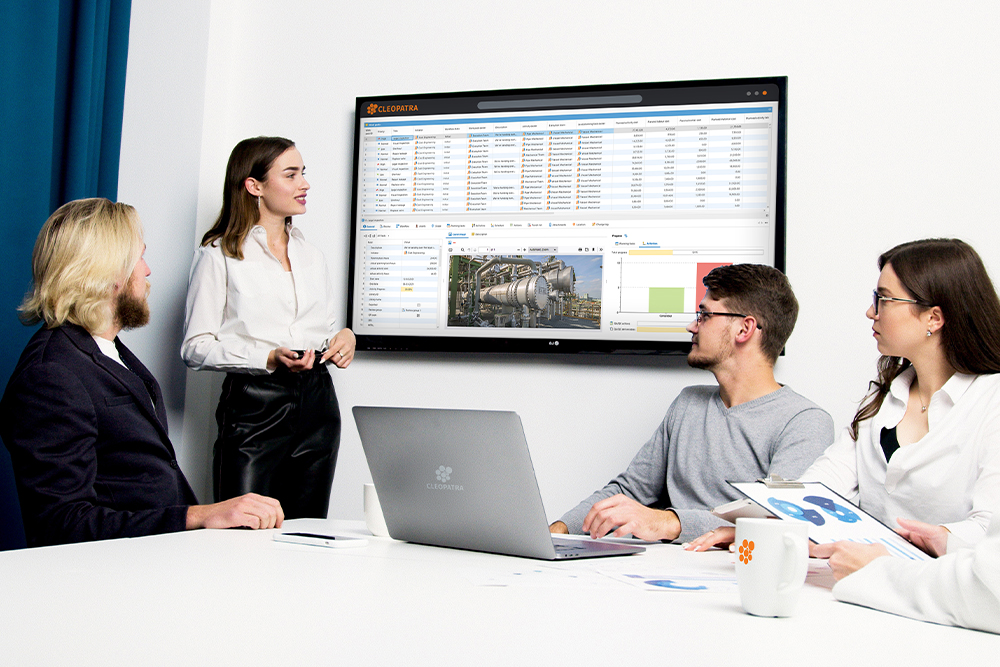STOs are critical events in industrial plants and facilities, requiring accurate cost estimation for successful planning and execution. In this blog we share valuable insights on how to improve STO estimating processes, ensuring efficient resource allocation and cost management. Let’s explore the key best practices as advised by experts in the field:
1) Having easy access to structured historical information:
Historical information is a valuable resource for estimating. Initially historical data shall be used to develop the first 50% of the estimate. By analyzing past projects’ costs, durations, and resource utilization, you gain a better understanding of the overall scope and potential cost drivers. Access to a structured historical database, serving as a single source of truth, provides estimators with reliable reference points and enables them to identify patterns and trends.
Suppose a refinery is planning an upcoming STO. By referring to historical data, estimators can determine the average duration and costs associated with similar turnarounds conducted in the past. This information helps in developing a more accurate initial estimate for the project.
2) Defining the scope:
Defining the scope clearly when estimating STOs is a must. This involves engaging key stakeholders and subject matter experts to ensure a comprehensive understanding of the work required. A well-defined scope prevents unnecessary surprises and omissions during the execution phase. It includes determining specific tasks, equipment, resources, and any unique project requirements.
If a turnaround involves the replacement of a large reactor, the scope should clearly outline the dismantling, installation, inspection, and testing activities, as well as the necessary resources and time frames.
3) Identify key equipment within the scope and key projects:
Identifying key equipment within the STO scope is crucial for accurate estimating. These equipment items often have a significant impact on the overall cost and duration of the STO. By focusing on these critical assets, estimators can allocate appropriate resources and develop detailed estimates that reflect the complexity and requirements of the project.
For example, in an oil refinery, a key equipment item might be the main distillation column. Estimators would analyze the costs and duration associated with disassembling, inspecting, cleaning, repairing, and reassembling the column to develop an accurate estimate.
4) Define/Create a detailed estimate for general mechanical equipment:
It is recommended to create a detailed estimate specifically for general mechanical equipment. Mechanical work is often the main cost driver in STO projects. By breaking down the mechanical scope into its components, estimators can assess labor, materials, and associated costs more precisely. This detailed estimate serves as a baseline for extrapolating costs to other disciplines, such as scaffolding and insulation.
For instance, estimating the cost of replacing a large pump involves considering the labor hours required for removal, installation, alignment, and testing. Additionally, estimators must account for the cost of spare parts, special tools, and any associated crane or rigging services.
5) Understand the drivers of detailed costs and determine the budget:
Mechanical work is typically the main cost driver and heaviest component in STO estimates. By accurately estimating the mechanical equipment scope, including associated labor and material costs, estimators can extrapolate those costs to other disciplines such as scaffolding, insulation, and painting. This approach enables them to determine the overall budget more accurately.
If the cost of mechanical equipment is estimated at $500,000, estimators can use industry standard metrics to extrapolate that cost to scaffolding, insulation, and other disciplines. This helps in determining the total budget required for the STO.
6) Achieving accuracy through market quotations:
To enhance accuracy, it is advisable to obtain market quotations from suppliers, contractors, and service providers. Engaging with these stakeholders helps align estimates with current market rates and incorporate any project-specific requirements or local factors that may affect costs.
Contacting insulation contractors to obtain quotations based on the project’s insulation needs ensures that the estimate accounts for the current insulation material prices, labor rates, and any unique project considerations.
To ensure a comprehensive and precise estimate, it is important to calculate all labor disciplines in detail for the final control estimate. This includes compiling fixed price quotations and considering the materials required for the STO. By incorporating all necessary elements, estimators can develop a complete scope up to the scope freeze, allowing for more accurate cost estimation.
Additionally, a strong cost control strategy is essential for effective STO management. Aligning and agreeing upon the cost estimation and control strategy with the procurement team ensures that all aspects of the project are considered, including procurement processes, supplier negotiations, and materials management. This alignment enhances cost control measures, resulting in better financial outcomes for the STO project.
Effective STO estimating is crucial for successful planning and execution. These best practices provide valuable insights into improving STO estimation processes. Cleopatra software plays a pivotal role in successful STO estimating, supporting estimators in all the key best practices discussed in this blog. With easy access to structured historical information, Cleopatra serves as a robust database, providing a single source of truth. Estimators can leverage historical data to develop accurate initial estimates and identify cost trends for specific disciplines and equipment. The software also enables effective scope definition by integrating all project aspects, aligning stakeholders, and ensuring comprehensive consideration during the estimation process. With detailed estimation capabilities, Cleopatra supports the breakdown of scope, calculation of labor, material costs and other resources, and extrapolation to other disciplines. Additionally, the software facilitates effective cost management through enabling stakeholders to monitor the performance of turnarounds, keep track of the budget and forecast changes.
By leveraging Cleopatra software, organizations can optimize STO estimating, enhance accuracy, and improve cost control, aligning with the best practices highlighted in this blog.




